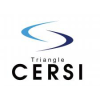Within the medical device space, the COVID-19 pandemic has increased pressure to produce devices like ventilators and diagnostic tests at a record pace.
Regardless of what the future holds, failure to act will only worsen the situation. While our adrenaline tells us to produce devices and materials rapidly, we must remain focused on quality. To successfully navigate the uncertainty and support public health initiatives, strategies used during this time must account for various factors.
Develop a Risk-Based Response Plan
In the current landscape, business as usual, is not an option. It is critical that medical device manufacturers are efficient enough to face the pandemic while also being able to pivot and respond to updates and changes that evolve by the minute.
Risk-based response plans should consider immediate action. Three areas to include are:
- If the product qualifies for Emergency Use Authorization
- Any international exemptions applicable to the device
- Notable downstream effects of pandemic disruptions
In the United States, regulatory precedent called Emergency Use Authorization (EUA) has been developed to help produce tests and diagnostic devices faster than the standard timeline. Through this program, the FDA can expedite the premarket review of a device to allow faster market entry in times of severe public need.
Currently, the regulatory landscape is in flux for all medical device companies, not just those seeking EUAs. Frameworks are changing on a global scale, and old rules may be getting revamped. However, this often depends on what type of device is being manufactured and where it is being sold, so leveraging the right exemptions may lead to faster market entry.
Some extensions include:
- Singapore will exempt specific devices like particulate respirators, protective gear, surgical masks and thermometers from registration requirements.
- Australia issued an exemption for mechanisms involved in the diagnosis, confirmatory testing, prevention, monitoring, treatment or alleviation of COVID-19.
- China will expedite the registration process for medical protective clothing if they meet standards from Japan, the European Union or the United States.
Create Collaboration with All Stakeholders
As this global health crisis continues, medical device professionals must seek out ways to work hand-in-hand with regulators, public entities and end-users for the sake of public health.
Instead of getting frustrated by the ongoing fluctuations, focus on how you can help by making useful contributions to control the spread of the virus, especially as companies begin to reopen in the coming weeks. Current efforts may require increased production, but future initiatives must stand by regulatory guidelines to ensure speed does not replace quality.
Align Public Entity Initiatives and Manufacturing Efforts
Both public and private organizations are trapped by the overwhelming scale of the COVID-19 pandemic. Moments of progress, coupled with moments of tension, have touched every entity in some manner. As governments continue seeking radical solutions, it is up to medical device companies to maintain clarity and transparency as they outline their response.
The term “flatten the curve,” referring to the graph outlining the rate of infection and whether that falls below or above the healthcare system’s capacity at a particular time, has become an actionable staple for planning. By flattening the curve, the virus’s spread avoids the care capacity threshold.
We continue to lack a unified response to COVID-19, as many countries struggle to develop the testing capabilities that can keep up with the rate of infection. Medical devices, however, can bridge this gap. For example, the device industry played an essential role in South Korea’s mitigation strategy. Drive-through testing was quickly deployed and provided throat swabs and temperature scanners. Walk-in centers also took extraordinary measures to direct patients through new plastic phone-booth-style tubes to prevent direct patient contact.
While the healthcare industry has uphill battles ahead, medical devices, in particular, will continue to play a critical role in defeating COVID-19. By establishing a flexible, risk-based response plan partnered with unified communications and collaboration, the medical device industry will find continued success.








